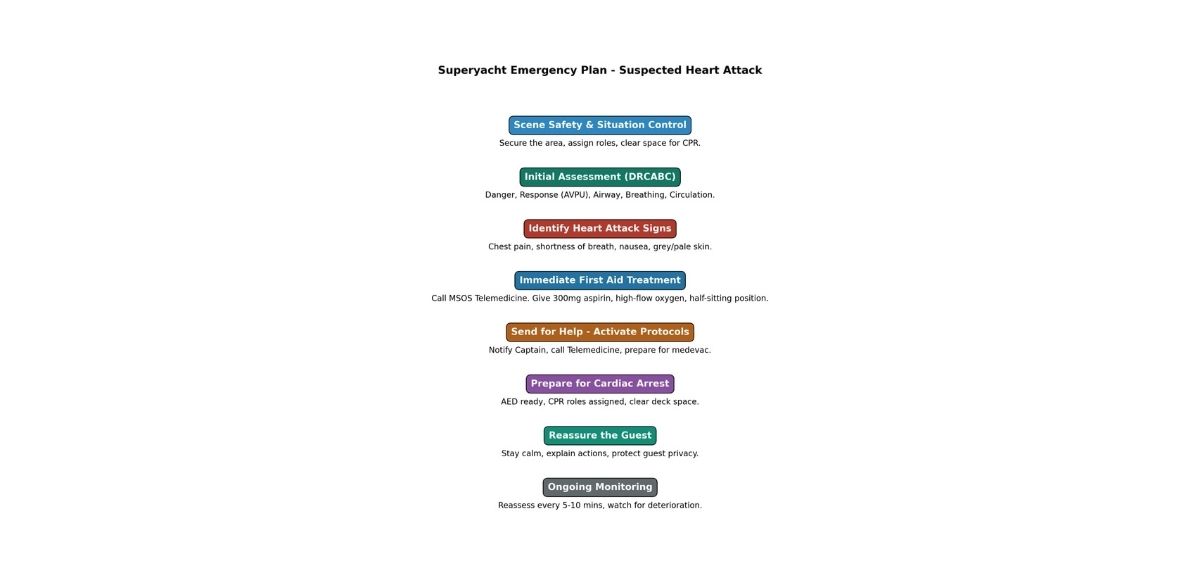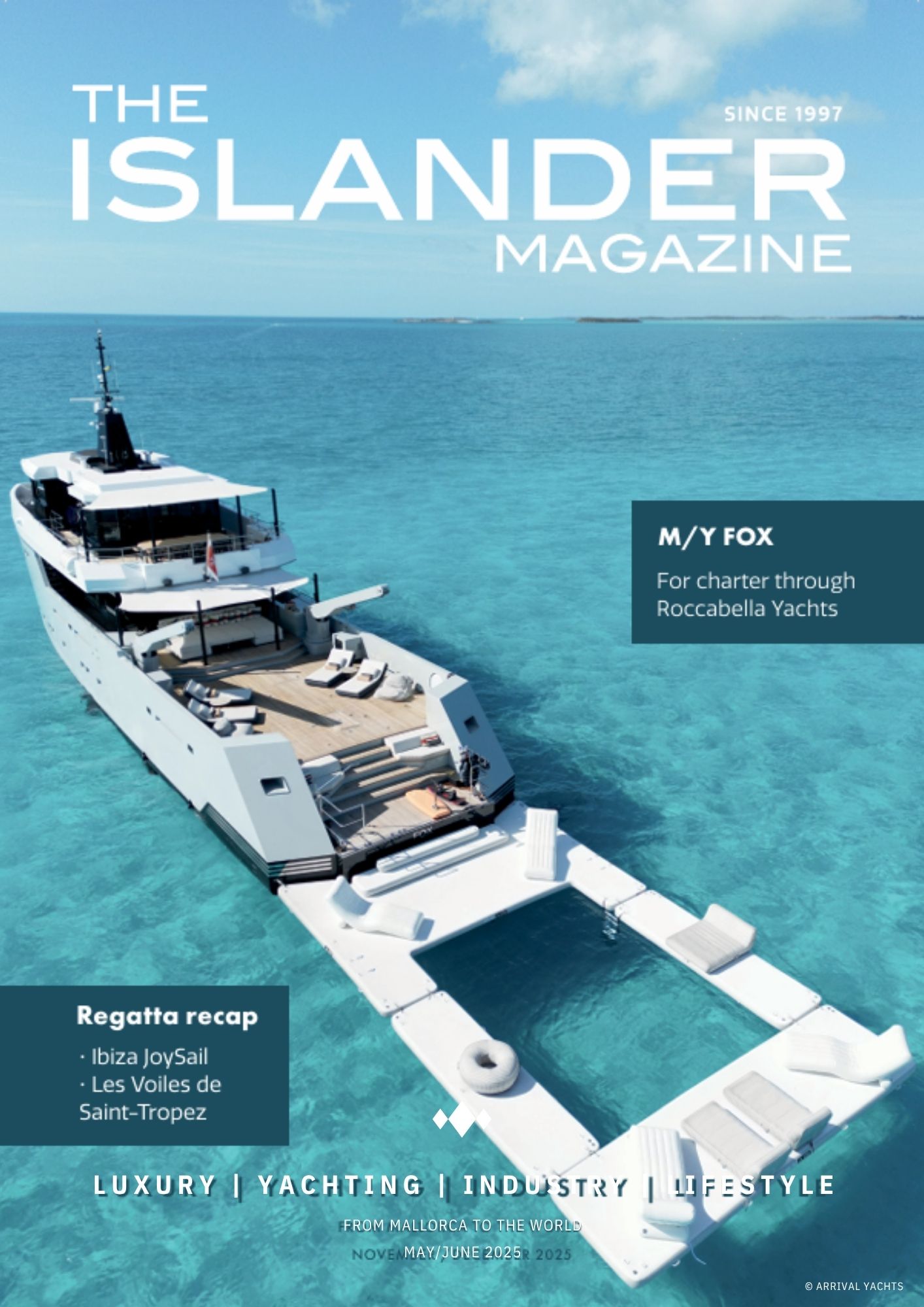Despite the crew’s best efforts, the guest who suffered a suspected heart attack deteriorates—his breathing becomes erratic, and within moments, he collapses. No pulse. He’s not breathing.
Cardiac Arrest.
There is no hospital. No ambulance. No paramedics.
The yacht is now the hospital, and you are the medical team.
The emergency moment – what happens next?
The crew knows exactly what to do because it’s drilled into their Emergency Management Plan (EMP) and they train regularly (hint hint!)
Scene is already clear – guests moved away, deck cleared
AED is ready – pads exposed, unit powered on
Roles assigned – Medical officer/lead, CPR lead, CPR second, airway support, breathing & oxygen, defibrillator, logistics planning & timekeeper, scribe
Step 1: Confirm Cardiac Arrest
- Unresponsive – no reaction to voice or pain
- No breathing or only agonal gasps
- No pulse
Decision made—start CPR immediately.
Remember, if they are not breathing we do CPR.
Step 2: High-Quality CPR Starts Immediately
- 30 chest compressions
- Hard, fast, center of the chest
- Depth: 5-6cm
- Rate: 100-120 compressions per minute
- 2 rescue breaths (if it’s safe or you have a CPR mask).
- If crew trained and equipped (bag-valve mask), deliver full breaths
- If not safe or no airway kit, continue hands-only CPR
Why: Immediate, high-quality CPR buys the casualty time—delivers oxygen to the brain until the heart can restart.
Step 3: Apply the AED as Soon as Available
- Attach pads bare chest only—don’t delay CPR for this, dry the chest well.
- Follow voice prompts
- Shock advised? Stand clear, shock delivered
- Continue CPR immediately after the shock—minimize hands-off time
Please note – For AED pad adhesion:
Modern AED pads are very sticky and designed to work on most chests, including moderately hairy ones.
- However: If there is excessive chest hair that prevents good pad-to-skin contact, most AED kits still include a razor so you can quickly shave only the area where the pad will go.
Step 4: Continue the Cycle – CPR, AED, Monitor
CPR cycles – 30 compressions to 2 breaths
Check the AED every 2 minutes
Continue until:
- Casualty regains consciousness
- Medical professionals (telemedicine or medevac) advise stopping
- Crew are physically unable to continue
Step 5: Communicate with Telemedicine / MSOS / (hopefully via THEMIS!)
- Update telemedicine in real-time—report vitals, CPR quality, AED shocks
- Prepare for helicopter medevac or tender transfer if feasible
- Continue documenting every action and time-stamping events
Psychological Reality Check:
CPR is hard. Crew fatigue, adrenaline, and emotion hit hard in these moments.
Rotate compressors every 2 minutes if you have the team.
Assign someone to monitor the mental load—because after this, the crew will need support.
Final Thought:
In these moments, your Yacht is the hospital. Your preparation, calm, and structured approach are what gives this guest a fighting chance.
You can’t wait for help—you are the help
This content is provided for educational and informational purposes only and is not medical advice. It is not a substitute for professional CPR training, first aid certification, or medical guidance.
Always follow your yacht’s medical protocols, consult your telemedicine provider, and ensure your crew is properly trained and certified in CPR and AED use by a recognized authority.
In a real emergency, immediate action and professional medical support are critical.
























0 Comments